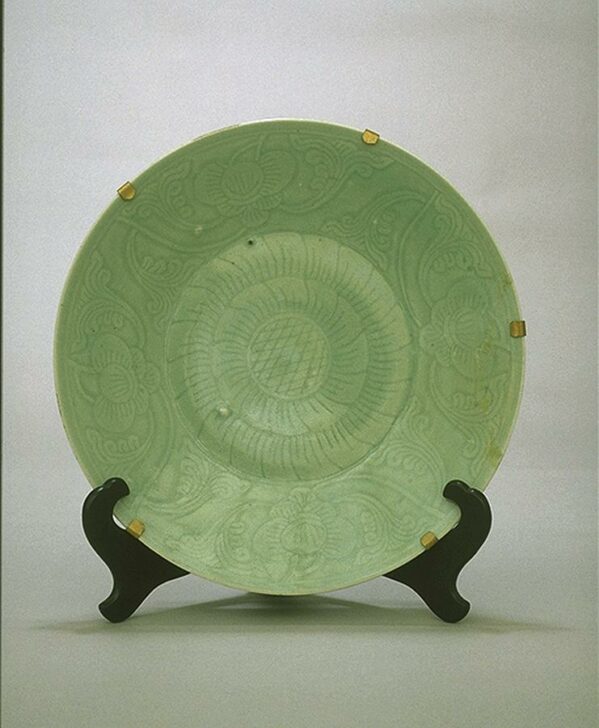Plate
Chinese

Description
Subject Matter:
A Longquan celedon plate of the the Ming dynasty (1368-1644). Chrysanthemums are affliated with scholarly pursuits, and represent autumn and long life. Peonies are associated with wealth, imperial splendor, and the erotic appeal of a beautiful woman.
Longquan is the most representative, widespread, and esteemed ware of the Southern Song dynasty (1127–1279). Production started during the Five Dynasties period (907–960) at the kilns near the market town of Longquan, where in later dynasties much of the ware was collected for shipping. Technological advances, such as the development of a multi-chambered, rising kiln and the use of stacked saggars (protective clay boxes), allowed for increased production in the Southern Song. In Yuan (1279–1368) and Ming (1368–1644) times, the kilns supplied wares to a domestic market as well as to overseas markets in Korea, Japan, and Southeast Asia.
Physical Description:
A stoneware flat bottomed plate on a footring with a wide flaring sides and direct rim. The base is carved with a chrysanthemum and the sides with a peony meander. It is covered in a green celadon glaze. This plate is a pair with 2002/2.6.
Usage Rights:
If you are interested in using an image for a publication, please visit https://umma.umich.edu/request-image/ for more information and to fill out the online Image Rights and Reproductions Request Form.